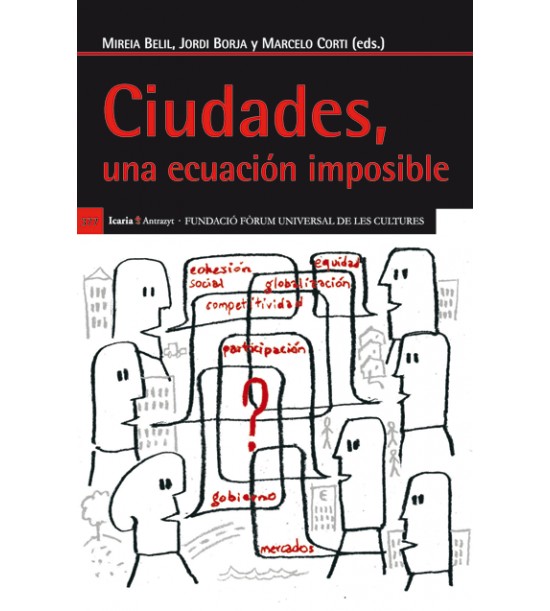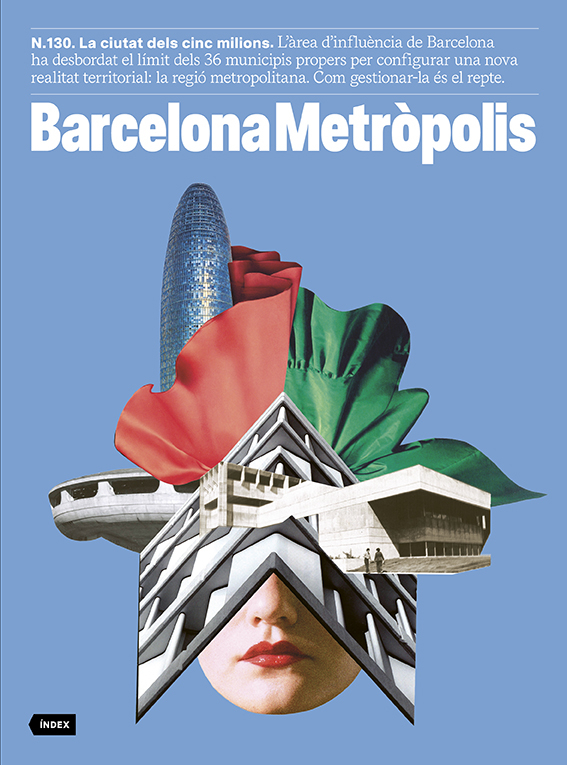Europe’s city system
- Dossier
- Apr 24
- 8 mins
In Europe, where approximately 80% of the population resides in urban areas, a network of polycentric and vibrant cities acts as the backbone of the continent’s development. By fostering relationships and collaboration among cities and regions, we can advance territorial equity, address present challenges and cultivate a high quality of life for all individuals.
In 1991, Pasqual Maragall wrote that Europe epitomised the urban continent, stating: “I like to define Europe as a system of cities”. Far from the images of urban explosions on other continents, Europe has been highly urbanised for decades, following distinctive patterns of urbanisation that set it apart from the rest of the world. In a continent where nearly 80% of the population resides in urban areas, a territory with a polycentric city structure is established, varying in intensity across different states. This structure is characterised by the widespread provision of urban services across geographical areas, the expansion of agglomeration diseconomies in major cities and metropolitan areas, and the dynamic and fluid interconnection of living spaces, which separate work, residence, consumption and leisure activities.
Development (regardless of how we define it), never unfolds uniformly across space. Social and economic processes manifest territorially uneven effects. Between the global scale and local communities, a multitude of scales exists, spanning from municipal to metropolitan, regional, subnational, national and supranational, extending to the global level. Some regions prosper while others falter, giving rise to what we term geographies of privilege (with the concentration and allure of resources and talent), or geographies of discontent for communities and territories excluded from the axes or positive impacts of development. While evidence suggests that large cities tend to harness the benefits of agglomeration to attract opportunities, services, infrastructure and talent, Europe has the potential to integrate other territories, such as medium and small cities, into the primary drivers of growth, namely the metropolises.
The European urban system
The contemporary European urban system is polycentric and dynamic, shaped by historical processes, investments and dynamics across different scales. Its formation is the outcome of city or urban region policies and actions (such as specialisation, production, attraction, marketing), European strategies and the policies and practices of the European Union (EU) member states. Furthermore, the vibrancy of this urban system is also explained by EU enlargement processes, the consolidation of strategies for macro-regions[1] and Euro-regions,[2] and the construction and opening of strategic infrastructures[3] outlined in the Trans-European Transport Network. This network is designed to enhance the continent’s connectivity and competitiveness and strengthen the EU’s territorial, social and economic cohesion.
This is an urban system characterised by two prominent cities, Paris and London,[4] known for their global scale, quality and functions, along with a series of urban centres, capitals of EU member states or candidate states, which are experiencing growth (Helsinki, Riga, Stockholm, Budapest, Prague, etc.) due to the political and financial power granted to them by the EU. Dozens of medium-sized cities or urban regions, diverse in size and characteristics, occupy specific niches of specialisation, from aerospace to education, logistics, healthcare services, ICT companies, research, photonics, electric mobility, sustainable food production and tourism.
They are known as the new global cities. Many of them enjoy significant international recognition and gain advantages through their alliances and relationships (Rotterdam, Lyon, Manchester, Munich, Barcelona, Krakow, Antwerp, Cologne, Stuttgart, Wolfsburg, Aalborg, etc.). These cities create spaces that are more or less institutionally structured and form what are called “grape clusters”, comprised of intermediate or small cities that play a role in the urban region based on the utilisation of connectivity or the so-called “borrowed size”.[5] European cities serve as the exoskeleton of European integration and as hubs linking to processes of internationalisation, regionalisation and globalisation.
Corridors and areas
Axes, infrastructures, urban regions, cross-border regions, Euro-regions, metropolitan areas, big, medium-sized and small cities, isolated villages, networked villages, depopulated areas… The European landscape grapples with the eternal tension between the realm of networks and flows on one hand, and the realm of areas and boundaries on the other. European territorial policies[6] place importance on the interdependence among territories and the necessary cooperation between different territories, levels of government, sectors and social actors to address complex issues and challenges. They also address the ongoing tensions between fostering competitiveness and generating critical mass and attracting people, investments, visitors and resources on one hand, and the need to achieve territorial balance on the other.
Territorial balance relies on a collective understanding that development needs and future impacts will differ across territories throughout the continent. Besides dimensions, international, national and regional urban connectivity plays a crucial role. Positive externalities of agglomerations can extend through city networks and connection axes. Being well integrated into a city network and well connected to other urban hubs (either physically or through cooperation) can partially offset the agglomeration economies derived from urban dimensions and metropolitan affiliations.
Today, cities are defined by their position within the interconnected structures of the territories they inhabit. This placement grants them access to resources and functions they would otherwise lack. In this context, managing city clusters, urban systems and city networks is crucial for Europe’s progress. This involves considering local autonomy, the principle of subsidiarity, asymmetries between centres, conflicts within networks and systems, complementarities and the recognition of territorial, economic and social cooperation. This is achieved by fostering a sense of solidarity and shared purpose among regions and cities across the Union’s territory.
This integration, in a sense, allows for tapping into borrowed size, an emerging political concept in several European countries. Borrowed size can be harnessed within metropolitan areas through collaborative and complementary approaches to addressing challenges, or through interactions within clusters or networks of cities across various spatial scales (acting as a substitute for the benefits of agglomeration). These strategies aid in positioning intermediate cities and those beyond development corridors, thus ensuring the redistribution of investment benefits across the breadth of Europe.
European corridors link points across the territory, generating new areas of activity, repositioning urban centres and integrating the European continent. However, they need to ensure the connection and spread of these advantages to areas of influence, intermediate territories and those areas experiencing depopulation and declining activity. Corridors can only become more pervasive if they transform into networks through connectivity (physical and digital), the expansion of general services and participation in networks of different scales. They also offer an opportunity to equalise opportunities across the territory and reduce geographies of discontent, which increasingly impact anti-democratic or anti-European political options. Solidarity bonds between cities, the emergence of new centralities, capital cities, innovative transportation, fiscal differentiation and the reindustrialisation of former industrial spaces can all contribute to this immense challenge.
Collaborations at the epicentre
Barcelona – both its metropolitan area and the region – is one of the emerging global cities, firmly embedded within the European urban framework with relationships and connections that help sustain its appeal and advantages. This active engagement within the European and global urban landscape serves as a pivotal driver for any city. Three important strategies emerge.
The first strategy entails actively fostering functional and transactional relationships across various dimensions and scales: city-state, city-region, international city-to-city, local city-to-city, city-enterprise and city-international actor interactions. The second strategy involves forging collaborations or alliances that transcend municipal or regional administrative frameworks, alongside developing regulatory frameworks or governance models to facilitate such relationships. The third strategy focuses on combining action within functional urban networks with establishing connections to existing national and multilateral institutions.
Governance, not only metropolitan but also urban, will be one of the challenges of the coming decades.
Governance, not only metropolitan but also urban, will be one of the challenges of the coming decades. Creative solutions are needed to address the current mismatches between activities, needs and fiscal policies, while also fostering flexibility in defining alliances, joint projects and discontinuous solutions or cooperative efforts across various geographical areas. We must refrain from viewing the city or metropolis in isolation or solely in relation to corridors. Instead, we must think, plan and organise the entire territory to ensure that Europe is not fragmented into geographies of privilege and geographies of discontent.
[1] To date, the European Union has approved four macro-regions as intergovernmental initiatives: the Baltic Sea (2009), the Danube (2010), the Ionian and Adriatic (2014) and the Alpine (2015). Collectively, these encompass 27 countries (EU and non-EU) and a populace exceeding 340 million.
[2] Numerous Euro-regions exemplify the operational ethos of a borderless Europe. The TriRhena Euroregion serves as a trinational platform for political cooperation in the Upper Rhine region, encompassing the urban hubs of Colmar, Mulhouse, Freiburg im Breisgau, Lörrach and Basel, spanning across France, Germany and Switzerland. It covers an area of 8,700 km² and brings together 2.3 million individuals. The Meuse-Rhine Euroregion, established in 1976 and granted legal status in 1991, covers an area of 11,000 km² and nearly 3.9 million inhabitants residing in the corridor of Aachen-Maastricht-Hasselt-Liège.
[3] Some major infrastructures that have impacted connectivity, spatial planning and the positioning of urban centres include the Channel Tunnel (linking London, Lille, Brussels, and Paris), the Øresund Bridge (Copenhagen-Malmö), Rail Baltica (Tallinn-Riga-Warsaw), the Mont d’Ambin Base Tunnel (between Lyon and Turin) and the Fehmarn Belt Tunnel (between Denmark and Germany), as well as high-speed rail networks and port modernisation.
[4] Despite London’s departure from the EU, it continues to maintain a pivotal role in the European urban framework.
[5] In 1973, William Alonso coined the term “borrowed size” to explain the mismatch between the size and function of smaller cities within a megalopolitan urban complex. He proposed that smaller urban areas “borrow” some of the significant agglomeration benefits from their neighbours, while simultaneously avoiding the associated costs. While Alonso initially focused on borrowed size from geographically nearby places, in an ever-expanding global economy, his argument readily applies to city networks more broadly. This suggests not only connectivity within regional networks but also at national and international levels. The concept of borrowed size is closely linked with city size/dimension, network connectivity and metropolitan functions in Europe.
[6] From the Perspective of European Territorial Development (Potsdam, 1999) to the Territorial Agenda 2030 (including its urban focus in the New Leipzig Charter), Europe highlights the significance of territorial and strategic planning, as well as the territorial dimension of sectoral policies, at all levels of governance.
Recommended reading
 Ciudades, una ecuación imposibleMireia Belil, Jordi Borja and Marcelo Corti (ed.) Icaria Editorial, 2012
Ciudades, una ecuación imposibleMireia Belil, Jordi Borja and Marcelo Corti (ed.) Icaria Editorial, 2012
The newsletter
Subscribe to our newsletter to keep up to date with Barcelona Metròpolis' new developments




